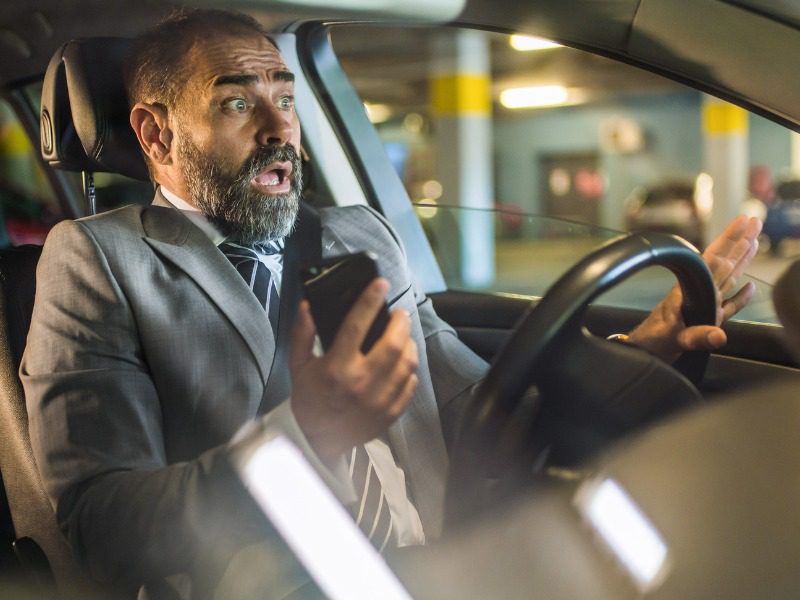What’s to blame for distracted driving trends?

Brokers hear lots of stories about minor fender-benders that don’t lead to injuries. And some could even be seen as amusing – if they weren’t linked to financial losses for insurers.
“We had an incident where someone was trying to light a cigarette – something we don’t usually hear anymore in 2023,” Jesica Ryzynski, claims specialist at Mitch Insurance, told CU. “They took their eyes off the road and rear-ended the person in front of them while trying to light the cigarette.”
She said the incident stuck with her because of how honest the client was about how the accident happened.
Drive-thru restaurants and banks are also a growing venue for fender-benders.
“This seems to be endless these days,” Ryzynski said. “The person behind our client is either not paying attention or openly admits they were on their phone. And they’re rear-ending clients in the drive thru.”
Which makes dash cams a valuable tool in settling those claims.
“There are situations…where our client is rear ended, but the person behind them is saying ‘no, no, they backed into me.’ And there’s really no way to completely verify that,” she said. “But with a dash cam, you can.”
Another claim trend Ryzynski’s seeing more of is people backing out of driveways and not seeing a neighbour’s vehicle parked on the street.
“[The] neighbour’s vehicle isn’t usually parked there and [the driver] thinks ‘well, they never park it there’ and backs into the neighbour’s vehicle.”
Turning trials
Distracted driving’s a big enough problem in Saskatchewan during the summer that Saskatchewan Government Insurance (SGI) dedicated its July traffic safety spotlight to the issue.
“When you’re driving a 5,000-pound pickup truck – or any other vehicle – it’s important to keep your head up, your phone down and watch out for these vulnerable road users,” said SGI president and CEO Penny McCune.
The public insurer advised motorists to:
Yield to pedestrians at crosswalks – stop before the crosswalk and stay put until everyone’s clear.
Never pass a vehicle stopped for pedestrians. It can be hard to react in time if someone crosses into your lane.
Don’t let looking for oncoming vehicles lead to inadvertently ignoring pedestrians when turning.
And, a recent Allstate study found 47% of respondents in Canada said they leave their pets unrestrained during car trips. What’s more, 20% said they let their pets “move freely in the backseat.” And 6% will let them sit on their laps while driving.
The late-May survey was answered by 821 Canadians who own cats or dogs. Allstate recommended drivers secure pets in well-ventilated carriers or specialized harnesses.
Two-wheeled woes
A more troubling trend, said Ryzynski, is seen in reports from clients who ride motorcycles.
“We’ve lately had a number of motorcycle claims where people are pulling out in front of them,” she said. “In [one] particular [claim], the rider had to take the bike off-road, over a hill and through a fence because they were trying to avoid the person who pulled out in front of them.
“Everybody has to be aware, including the motorcyclists, because unfortunately they [often] have to be responsible not just for their own actions but constantly aware of the actions of everyone else on the road.”
SGI, meanwhile, advised drivers to be aware that motorcycles, bicycles and e-scooters are much smaller than cars, which can make them hard to see. “Maintain a minimum three-second following distance behind motorcycles, just like you would any other vehicle,” SGI said in a recent press release.
And, it advised drivers to look twice when making left turns across traffic. “There might be a motorcycle, bike or scooter hidden behind oncoming vehicles,” SGI said. “Look, then look again, to make sure it’s safe before you go.”
So, what’s at the root of the problem?
It’s Ryzynski’s job to talk with claims adjusters all day, every day. And she says the problem isn’t just about cell phones, onboard car tech, or even lighting a cigarette.
“It’s the mentality. [The notion] that I am the only one in this moment on this road doing what I’m doing. And my priority is just where I need to get, when I need to get there,” Ryzynski said.
“I think that if people slowed down and took the time to look around, so many of these accidents could be avoided.”
Feature image courtesy of iStock.com/DjelicS



